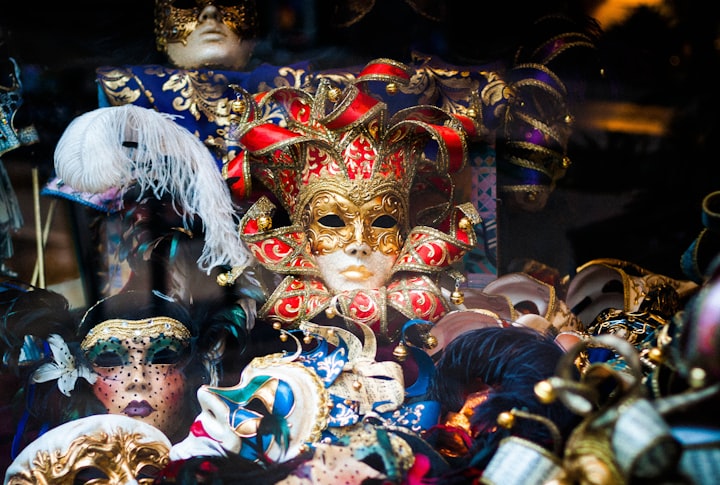The Artist, the Sausage Dog, and the Stripper
Pontifications on life drawing

Not that I’m much of an artist; my passion for life drawing far outpaces my current level of skill. I’m not going to go so far as to pretend I think chiaroscuro is a model of Korean car, but I don’t use an easel, and I don’t hold my pencil the right way (between thumb and index finger). I sit with my sketchbook on my lap, and, consequently, I’m always drawing the models at an unflattering low angle. The one thing I do right, I think, is not to use (or even own) an eraser: one must commit.
The life drawing place I started at, Missing Persons, lies behind a door charmingly and somewhat mysteriously labelled “Alexander Lau PTY. LTD. DESPATCH” in gold on the interior glass, within the historic garments district in the Nicholas Building, Flinders Lane, Melbourne. Found on the 4th floor via a lift I’m not sure has been renovated since the 1920s when the building was constructed, or even more precariously, up several flights of stairs so worn with age that the edges are rounded, the stone chipped in places.
The other artists were mostly university students; cheap cab sav and beer on offer. I split my plastic cup of wine all over the concrete floor once trying open the door with my hands full. They painted the floor a deep red not long after. It pleases me to imagine I inspired this, but that might just be the guilt talking (I couldn’t stay to help mop up).
My favourite student there: Kevin Bayken, a loveless, loyal-less Dachshund (pictured in the header). Kevin would wind his way around the room, dodging pats in his dogged determination to sniff out snacks. As soon as he realised you had nothing but affection on offer, he would make a beeline to the next likely target. I should mention, however, in his favour, that he was very well behaved and almost never barked while the model was posing.
I’m at a new life drawing place now, the Hawthorn Artists Society. It’s local, and as they have a session held on Sunday mornings, this means I can sketch after a sleep-in rather than after a day of sedentary work. They’re an older crowd; they fuss over me and try to convince me to sit on a cushion instead of directly on the concrete floor. In winter, when at long last I give in, they insist on a second cushion. Or the donkey easel: a deplorable invention, a sort of odd bench you awkwardly straddle with a small easel attached. Quite the contraption.
Instead of shifting through poses of different duration (30 seconds, a minute, 2 minutes, 5, 10 and 15), as at Missing Persons, at the Artists Society, the models are required to hold the same pose for 20 minutes at a time, with breaks in between, until the end of the session. With regards to the model, there are some unspoken rules beyond the obvious “no photography, no touching” no-brainers.
These are shibboleths such as “no engaging the model in conversation till they’ve robed up” and “divert your gaze away from the model as they climb the plinth and settle back into their pose”. This latter “rule” does double-duty: it’s respectful to avert your eyes from their unseemly sway and jiggle, but it also allows you to take in the Gestalt, the model exactly as they’ll stay for the remainder of the pose, and how your finished sketch should look like.

During the breaks, I walk around to see sketches of the model, rendered in different angles, styles and mediums (charcoal, water colours, graphite and coloured pencils). One thing that strikes me in particular, is that every artists seems to sketch the model as slightly thicker than they really are, as though the model’s body took on a certain preponderance in the admirer’s mind which transferred to the page. The model becomes larger than life.
Observing other’s art work is not only fascinating, it is extremely beneficial because it strengthens the top-down cognitive process. There’s always the irresistible pull to cheat when sketching from life, to draw from an internal schema instead of intense scrutiny of a complex three-dimensional object. Nevertheless, developing this schema is crucial (Kozbelt, Seidel, ElBassiouny, Mark, & Owen, 2010; Ostrofsky, Kozbelt, & Seidel, 2012). Incidentally, that’s why those “drawing on the right side of the brain” books don’t work for people with a modicum of artistic ability, the top-down process is too well developed for switching to the bottom-up process (e.g. copying an upside-down image) to yield a better result.
Out of something akin to reverence, I don’t talk to the models during the break. In that moment they are not so much flesh and blood people, as living, breathing objects d’art. Not to mention, some of the observations I wish to share with the models might be better kept to myself. I can only imagine the consequences if I were to enthusiastically expound on the “intrigue” of the droopiness of their eyelids, the “compelling” nature of their jowls, or the fierce intensity of their “serial killer eyes” (“Michelangelo’s David eyes” was how another artists put it to the model — in sharp contrast to my inability to flatter.)
There is one model I do wish to speak with, however. I have a business proposition, er, suggestion for him. On the noticeboard at the Artists Society there are the expected pamphlets promoting painting lessons, workshops and art shows. Inexplicably, also pinned to the broad, is the business card of one Mr Dragon Night, a middle-aged Goth with long, dyed black hair. Looks rather like a vampire. To quote his business card, his services include “all your adult entertainment needs such as Relaxation & Nuru services, Escort, Strip Shows” and of course ‘a lot more…” I’ll let you Google “Nuru” yourself, and to contemplate what “all your adult needs” implies…

The presence of such a business card, considering the older and presumably more conservative demographic, puzzled me. As did the card’s subscript, “Melbourne’s only Gothic Male Stripper”. Only gothic male stripper? That’s quite the bold claim. And while it’s good to find one’s niche, surely such a monopoly cannot last*.
Mr Night has made a grave misstep, I found myself thinking, he should have printed cards proclaiming him Melbourne’s premier gothic male stripper. Less room for debate, more for interpretation. If he doesn’t model for the Artists Society soon, I might have to resort to contacting him on the phone number (or Hotmail address — clearly, he’s been at this a while) provided to impart my advice. (Spoiler: that's exactly what I did.)
The next time I peruse the noticeboard I notice his other business card, pinned high above the first. It features a nude photograph of Mr Dragon Night, a tasteful interplay of light and shadow over muscle, accompanied by a list of rather more congruent services: life modelling, artist and art groups, education institutions, photographic modelling, extra work. This guy hustles. Good of them to allow him to put both cards up, I thought to myself.

While we're on this prurient tangent, I’ve never once read a piece on life drawing that doesn’t attempt to answer, “is it sexual?” I don’t see why I should be the one to break the mould. The way I conceptualise it, there are three ways to look at the human body: clinically, like a nursing student or coroner might, sexually, and with an aesthetic appreciation. (All three if you’re a necrophiliac who works at a morgue. Bam-dum-tish!)
The latter two ways of viewing the human body can surely overlap under the right circumstances, but I think, rarely with life drawing. People without an artistic leaning don’t seem to realise exactly how absorbing drawing is, not only for the love of it — I could draw the same forearm a thousand times and still be in thrall of the human body — but also due to how mentally taxing the process is. Even if I did find a model attractive — unlikely given how few of them are male — I wouldn’t have the cognitive resources to dedicate to such a line of thought.
That must be why life drawing brings on “flow”. In this state, every other thought switches off. Sometimes there’s still a scrap of mental energy that hasn’t been marshalled into action and finds itself diverted to enjoying the music playlist: I’m happy, I’m cross-hatching the shadows in the same staccato as the beat. At other times — the best of times — I experience complete and total immersion (Nakamura, & Csikszentmihalyi, 2014). The inner critic switches off, the usual worries, desires and daydreams are banished. Nothing seems to exist except for the connection of my eye travelling the contours of the model’s body — every pane and curve and sharp angle — transferred to the tip of my pencil gliding across the page.
*In the course of obtaining high resolution images of the business card and permission to feature it, I have learnt that this monopoly has in fact lasted ten years… who’s to say it won’t last many, many more?
References
Kozbelt, A., Seidel, A., ElBassiouny, A., Mark, Y., & Owen, D. R. (2010). Visual selection contributes to artists’ advantages in realistic drawing. Psychology of Aesthetics, Creativity, and the Arts, 4(2), 93.
Ostrofsky, J., Kozbelt, A., & Seidel, A. (2012). Perceptual constancies and visual selection as predictors of realistic drawing skill. Psychology of Aesthetics, Creativity, and the Arts, 6(2), 124.
Nakamura, J., & Csikszentmihalyi, M. (2014). The concept of flow. In Flow and the foundations of positive psychology (pp. 239–263). Springer, Dordrecht.
About the Creator
Angela Volkov
Humour, pop psych, poetry, short stories, and pontificating on everything and anything






Comments
There are no comments for this story
Be the first to respond and start the conversation.